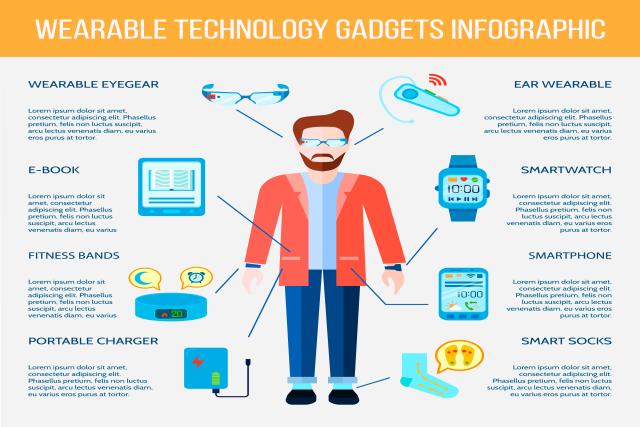
It is certainly impressive how rapidly wearable technologies touch smart gadgets like smart glasses and biometric wearables. Health technology wearable devices are just scratching the surface. The global wearable technology industry is projected to reach a staggering 128.07 billion USD in 2023 and is projected to see an increase of 12% from 2023 to 2030. Let us take a closer look at the innovative developments and changing trends of wearable technology. Wearables are more than health gadgets. They are devices that can change productivity levels across industries.
The combination of AI, IoT, and 5G is reinventing the performance of wearable technology. The shift to AI enhances the precision in crafting tailored touches while the IoT ensures seamless connectivity. Moreover, the fifth generation mobile communication system (5G) facilitates faster transfer of data, which minimizes latency during real-time checks. Together, these factors result in the creation of complex and smarter devices that are capable of interacting with users instantaneously, thus enabling everything from smartwatches to AR. Such raw devices are astonishing by themselves; the way they allow an individual to interact with the device and the experience they provide is phenomenal.
AI Chronic Care and Wellness Management Health and Fitness Devices
Modernized smart health devices incorporate advanced capabilities and do their jobs efficiently. Monitoring a person’s heart rate live or checking a diabetic person’s glucose levels are just a few ways wearables are changing the healthcare world. Remote patient monitoring enables practitioners to proactively manage chronic conditions without requiring patients to visit a healthcare facility. Health-focused AI aids fitness lovers with relevant advice regarding exercises and optimal rest periods in order to achieve the best results and hasten recovery.
Innovations in Wearable Technology: Application Beyond Health and Fitness
Wearables are now commonplace for anyone that is not a professional sportsperson. The new frontier has been crossed with the introduction of AR smart glasses and biometric wristbands. Biometric smart clothing passes information to the wearer through woven intelligent fabrics. Contactless payment rings and wristbands allow the wearer to make purchases with ease.
Security & Data Privacy: The Growing Challenge
As wearables continue to harvest vast volumes of user information, security is becoming a matter of concern. Privacy protection among end users of IoT wearable technologies is important since the device collects location and health information. In as much as firms are putting some effort toward device encryption, secure cloud storage, and tighter security regulations on wearable devices, more effort needs to be done.
Future Trends: What’s Next for Wearable Tech?
The industry of wearable technology seems to be abounding with possibilities because of new shifts in the market. With the addition of flexible displays, wearables will be easier to use and more portable. Additionally, efficient cordless batteries will expand the use of these devices, while brain-computer interfaces will make it possible to control technology directly just by thinking. All these changes will greatly enhance the usefulness and integration of wearables into users’ lives.
Conclusion
The growth in the use of AI, IoT, and 5G in the evolution of smart wearables enables new opportunities in health, fitness, and routine convenience. The emergence of biometric wearables, augmented reality smart glasses, and future developments means that the wearable technology market will grow exponentially and create a more connected smart world.







